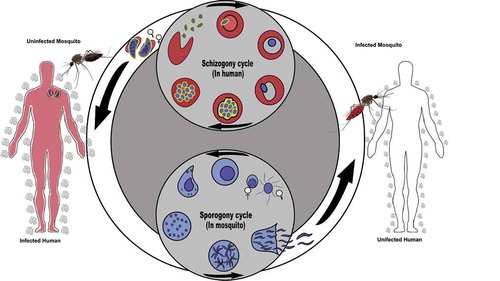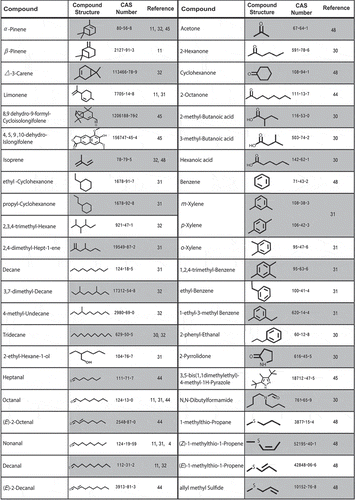Figures & data
Figure 1. Plasmodium falciparum transmission cycle.
The human malaria transmission cycle, including the first bite of an uninfected mosquito (top left) on a gametocyte carrier (infective human: schizogony cycle). Mature gametocytes are taken up by female mosquitoes, initiating the mosquito developmental stages of the parasites (sporogony cycle), and during this stage the parasite follows replication stages and the mosquito becomes infected during ~7–10 days and infective ~11–14 days. When an infective mosquito bites an uninfected human host (top right), it can transmit the infectious stage (sporozoites) to a second human host and malaria transmission cycle continues.

Figure 2. Plasmodium induced volatile organic compounds (VOCs).
Plasmodium associated compounds implicated in host responses (in vitro or in vivo studies). Chemical structures of volatile compounds have been shown. CAS indicates Chemical Abstracts Service which provides unique numerical identifier to every chemical substance described in the open scientific literature.

